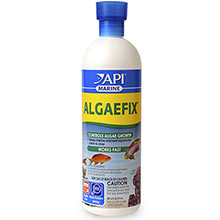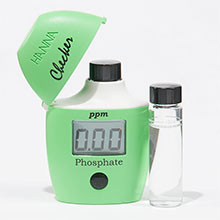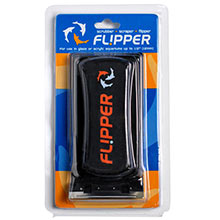How To Get Rid Of Algae In Fish Tank
The appearance and growth of algae in an aquarium is not necessarily bad. In fact, it is the natural order of things. It shows that your aquarium is well balanced and healthy. Only when the algae is allowed to grow out of control and cover everything is it a problem. Left unchecked, it can cover the glass - in colors ranging from black to bright green in freshwater, or even pink, purple, or burgundy in saltwater - making viewing your beautiful inhabitants impossible. It can also quickly cover the decorations, diminishing the appeal of the entire environment.
Algae keeps things looking natural and provides a food source for fish and microorganisms. Thus, your goal should not be to eliminate all algae. Instead, it should be to manage its growth to keep the population at a desirable level.
Many aquarists who encounter hair or other tough algae treat the symptoms, not the problem. For example, they may bleach all their decorations and gravel and then treat the water with a dechlorinator, placing the health of their fish at risk, only to discover the algae making a fast comeback within days. Knowing what factors contribute to algae growth, and your management options, will help you keep a healthy, well-balanced aquarium.
First, test your water!
To avoid algae problems, it is good practice to test your aquarium water regularly, and your tap water before waterchanges. If you already have an algae problem, your first step should be to test your tap water. If the test results show significant levels of phosphate, nitrate, or iron, your battle against algae will be futile until levels are reduced.
Fight phosphate at its source
Common phosphate sources include tap water and fish food. To avoid unwanted phosphate levels, make sure no uneaten food is allowed to remain in the aquarium. The most effective means to reduce or eliminate phosphate already present are a reverse osmosis (RO) unit or a tap water filter. Commercial phosphate removers or a combination Carbon-Phosphate Remover can also be effective.
Use high-grade filters and media
Algae thrives on excess nutrients, nitrate, and iron which result from a number of factors, including overstocking, overfeeding, contaminated tap water, and failure to do timely water changes. To help lower nutrients, use of a premium grade carbon will help reduce dissolved organics and metals, and slow the return of algae. However, if certain types of hair algae appear in your aquarium you may have a persistent problem that requires tougher measures.
The right choice of filter media can also make a big difference in phosphate levels: Poly Filters, which can be used to filter your aquarium and pre-filter tap water, will remove phosphate, iron, and heavy metals. These filters change color to indicate what they are removing.
Maintain good water quality
Routine partial water changes of about one-fourth, every three to four weeks minimum, helps remove excess organics. Ideally, for saltwater, use water purified through reverse osmosis (RO). If you are using tap water which contains chlorine, be sure to add a dechlorinator, and, if algae nutrients are present, run it through a prefilter. To minimize the amount of organic matter in the water, do not add any new fish while it has excess algae, and feed your fish only what they can consume in a couple of minutes.
Liquid algae controls such as AlgaeFix are safe and effective in freshwater aquariums. Once you have taken care of the root problem, you can use them to help clean up your aquarium and prevent new growth.
Serve the algae up for dinner
In freshwater aquariums, the addition of certain types of fish are a win-win strategy. You get to enjoy the fish, they get to enjoy the algae. Many varieties of freshwater fish, such as Plecos, include algae in their diet, as do saltwater fishes, including Tangs and most Angelfishes. Also, In salt water, macroalgae species can be cultivated in the aquarium to control unwanted pests types like slime, hair, fungus and bacteria forms.
Modify your lighting
If algae growth is fast, your aquarium may be getting too much light, even if carefully positioned out of the sun's direct rays. You might need to block reflected light, or decrease the amount of time you illuminate your aquarium.
Since algae requires light and nutrients to grow, you may consider running your lights for shorter periods of time. It has also been shown that some algae appear to grow better as light intensity decreases. Consider changing bulbs as the intensity diminishes on aquarium bulbs over time.
Just wipe it away
The simplest control method is also the most economical. You can reach into the aquarium and scrub it away with an Easy Cleaning Algae Mitt. If you want to keep your hands dry, use a magnetic algae scraper such as the Mag Float to wipe your aquarium walls clean from the outside. You can also remove excess amounts by siphoning or filtration. Manual cleaning won't prevent the return of algae, but it helps make other management methods more effective. Whatever manual cleaning method you use, do not leave loose algae floating about in your aquarium where it will decay, increasing the amount of dissolved organic material and lowering the oxygen level.
Most algae problems can be managed, especially if diagnosed early. Using a combination of the techniques above, you can keep your aquarium clean and colorful.
RECOMMENDED PRODUCTS
 Aquarium Conditioners & Additives for Algae |  Aquarium Phosphate Test Kits |  Aquarium Algae Maintenance Tools |
How To Get Rid Of Algae In Fish Tank
Source: https://www.liveaquaria.com/article/5/?aid=5
Posted by: pakdeeme1950.blogspot.com

0 Response to "How To Get Rid Of Algae In Fish Tank"
Post a Comment